Notes from THE AI Decade
- Assistants - formatting, documentation
- Agents - for execution of flows, task management
their ratio is 10:1 - 10 assistants and 1 agent
- automated form for exchanging knowledge
- AI powered knowledge revolution
- 32d/year for finding information (in companies)
- most knowledge is still just in people heads
Topic of meeting summaries
- agent to scan all meeting notes and create an overall summary
Knowledge Coding
- standardize company knowledge and making that knowledge accessible
- it needs a core understanding of what data types and what data importance level
- they also call it a Second Brain
“Your process is my opportunity”
A knowledge base for AI adoption….
Generation ChatGPT
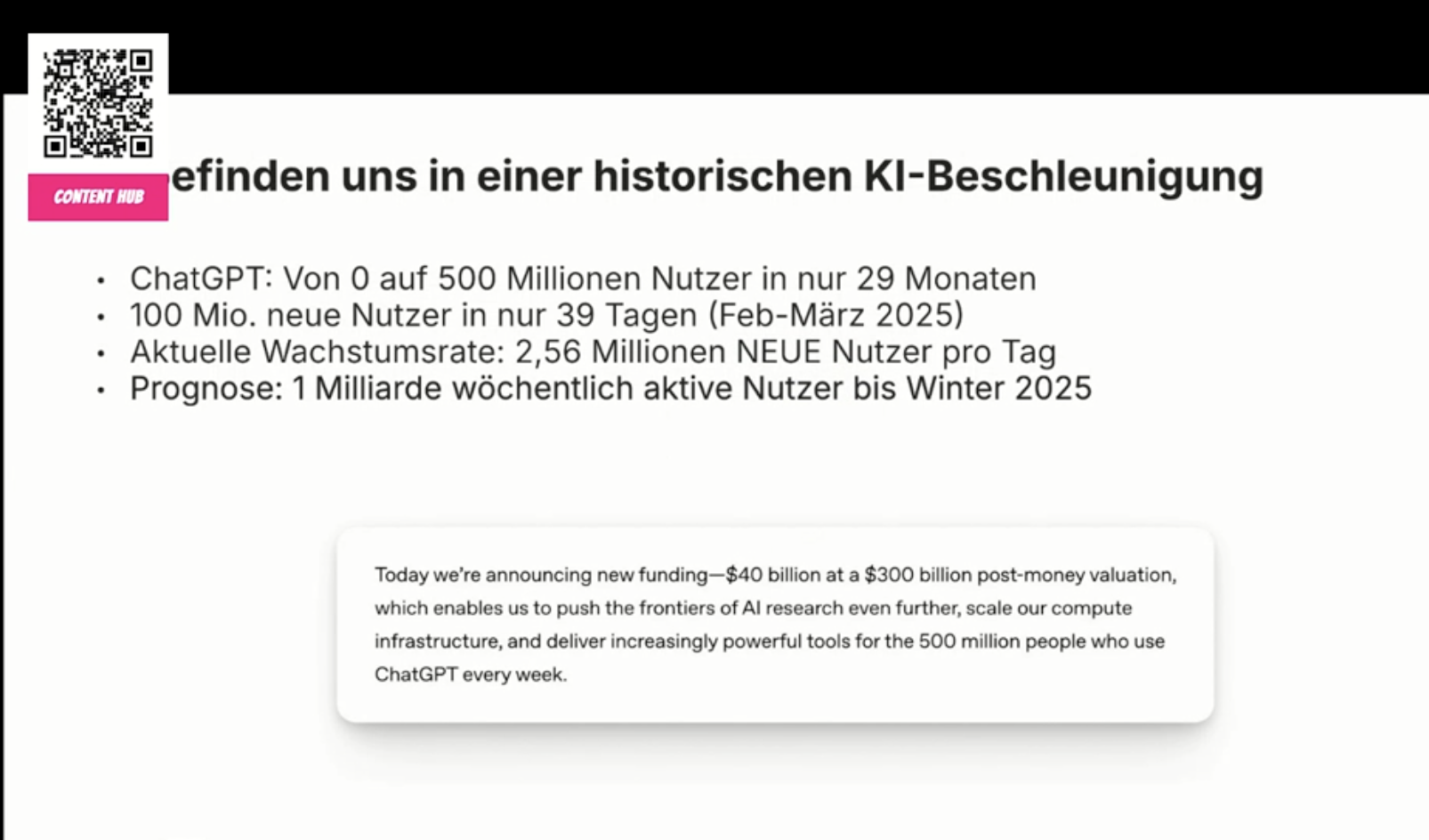
- soon 1 Billion ChatGPT users
Creative writing benchmark - message: creativity is heavily increasing
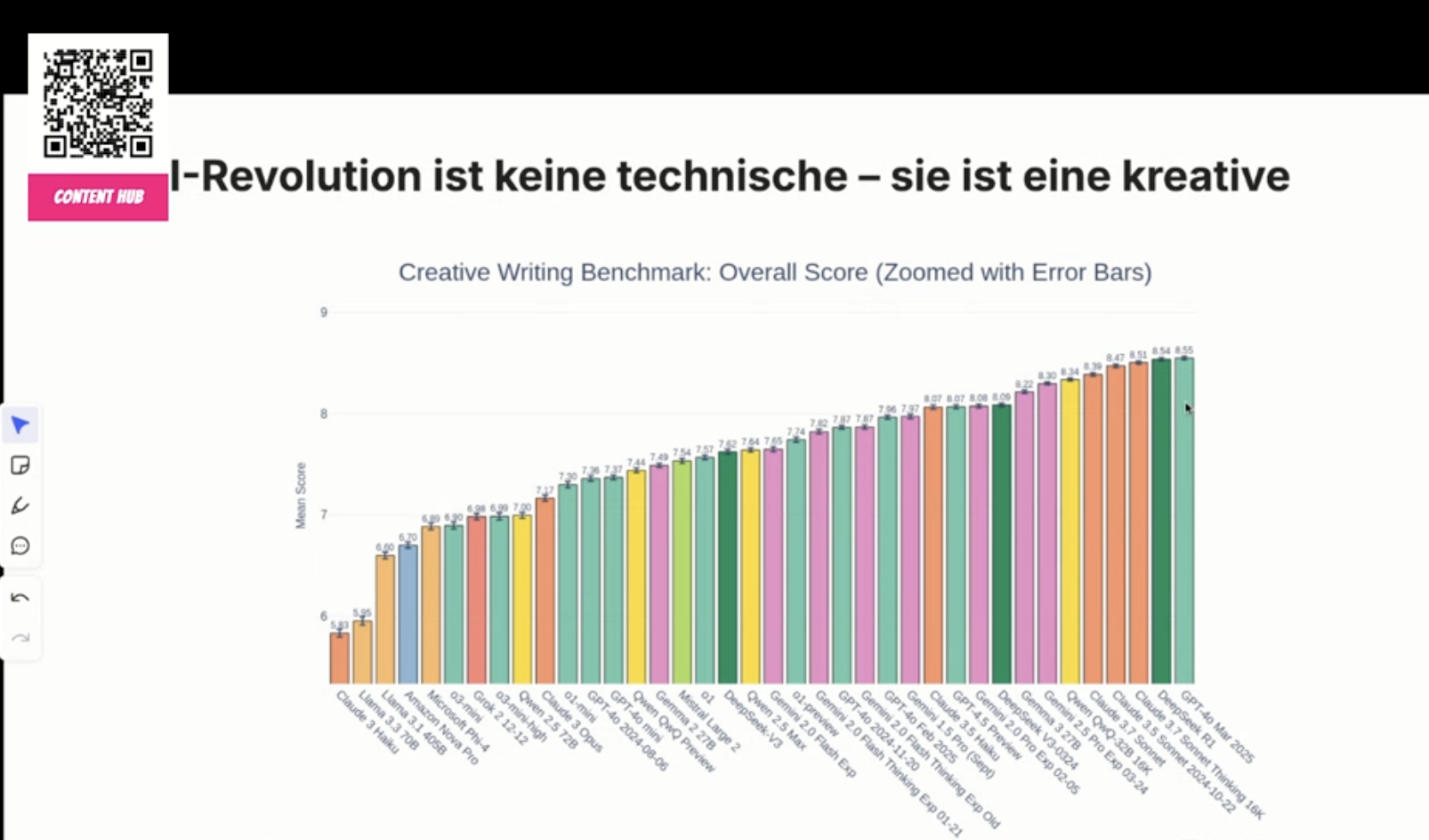
Claud/ChatGPT turning point
Non-KI topics
- breaking rules
- understanding social context
- individual journeys
- ethical understanding
Insights from Decaid Academy
When do transformation succeed/when do they fail?
- Companies start seeing AI-First as an important step
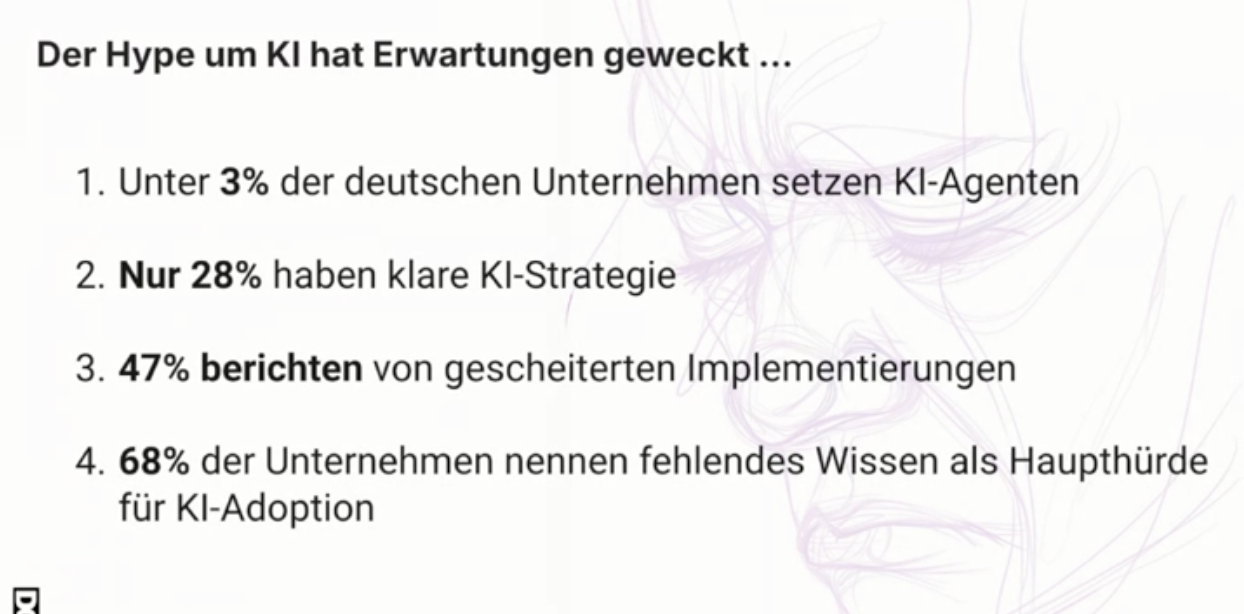
- 68% - missing AI knowledge as main problem
- not really a good AI implementation strategy
Produktivity increases 40+% in 6 months
3 phases of usage
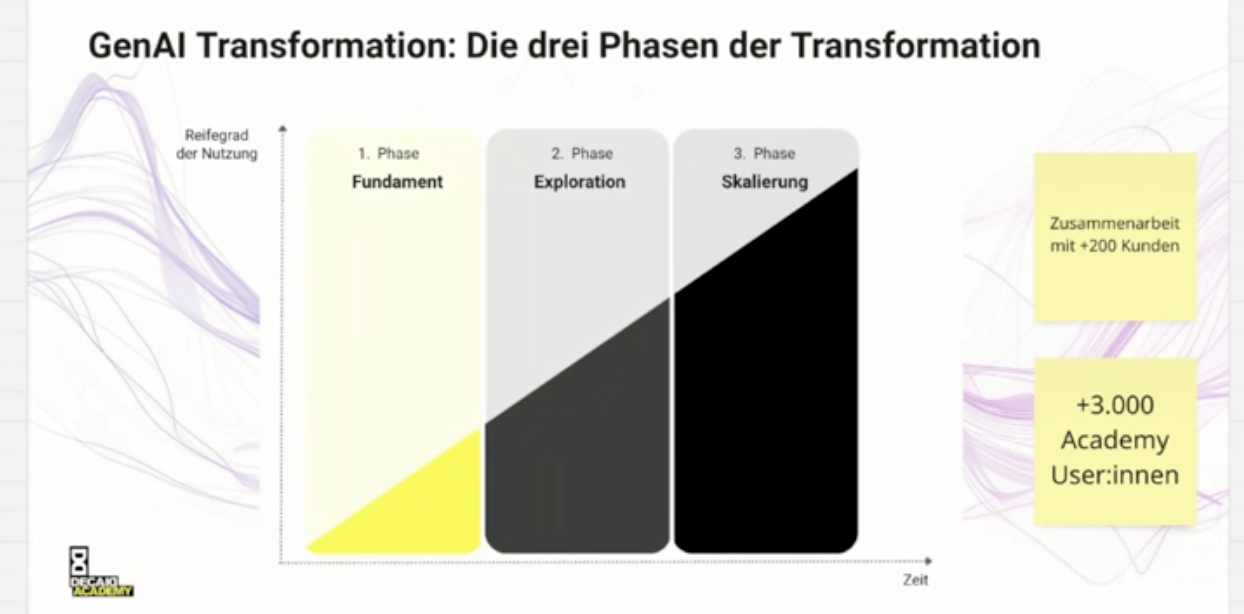
Fundament
- first AI experiments
- basic knowledge
- understand what AI can do well/what not
- understanding tools
- formats
- kick-off workshop
- eLearning courses
- update/info sessions
- best-practice sharing
- pilot-project and experiments
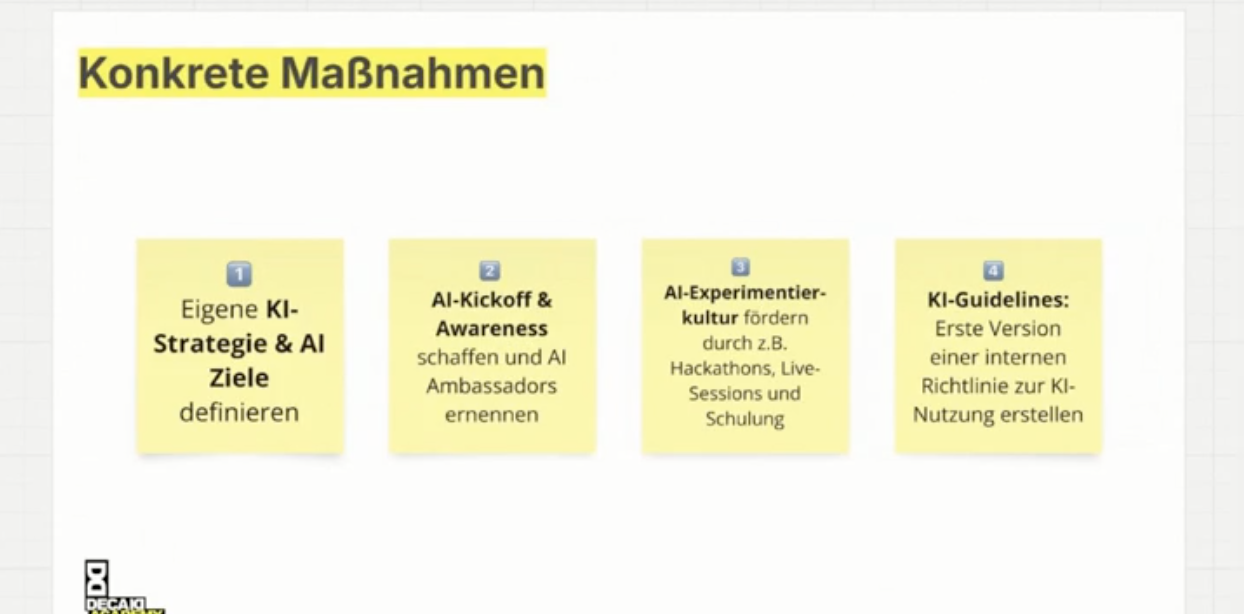
Strategy defined, first use cases, positive first impressions
Exploration
- starting point: missing common usage approach
Goal:
- standardize
- first process integration
- taskforce/AI champions/AI embassadors
- with mandate to take action
- pushes the topic, shares, informs
- build first productive workflows
- show measurable efficiency gains
Skills:
- Workflow-Design & process integration
- advanced prompting
- understanding automation and API-integration
- custom assistants for specific tasks
- QA becomes super important (e.g. to cover hallucinations)
Formats:
- task-force
- role-specific usage discussion
- workflow workshops
- case-study sessions
- tech-deep-dives
Action:
- task force (<10), cross-functional
- tool-stack definition
- reduce spreading of tool-landscape
- implement first workflows
- implement AI-buddy-system
This phase is important for long term success
Scaling
Goal:
- integrate AI in relevant processes
- systematic employee trainings about AI-skills
- implement AI governance, ensure proper risk-mitigation
- productivity gains about 30-40% (in often less than 1 year)
Skills:
- AI process management
- Agent building
- system integration - with company
- business transformation
- AI governance & compliance know-how
Format:
- scaling AI taskforce in all units
- innovation labs - AI exploration spaces
- cross-functional projects
- executive programs … to upskill leadership roles in direction of AI&strategy
- advanced AI-tech workshops
- AI transformation conferences
Outcome: AI-first mentality, tool standardization, governance structures implemented
Important message - the GAP is increasing super fast
Main hurdles
- expectation management … it needs time to implement
- “no time”
- stuck in experimental phase with unstructured usage (often when a task-force is missing)
- missing top/middle management commitment – needs anchoring in top goals
Hints
- develop an AI strategy
- maintain the governance structure
- team eduction
- implement a supporting infrastructure
- AI task-force and change team
- define clear AI-related company-wide goals
- experiment, experiment, experiment and welcome an iterative trial & error approach
- use-cases are crucial
Roles
- AI manager
- AI designer
- AI marketing manager
- AI copywriter
- AI project manager
- AI compliance manager
- AI developer
- AI generalist
AI and Content - AI supported content workflows
- more efficient content creation
- connection between - human - systems
Problem - scattered tool landscape
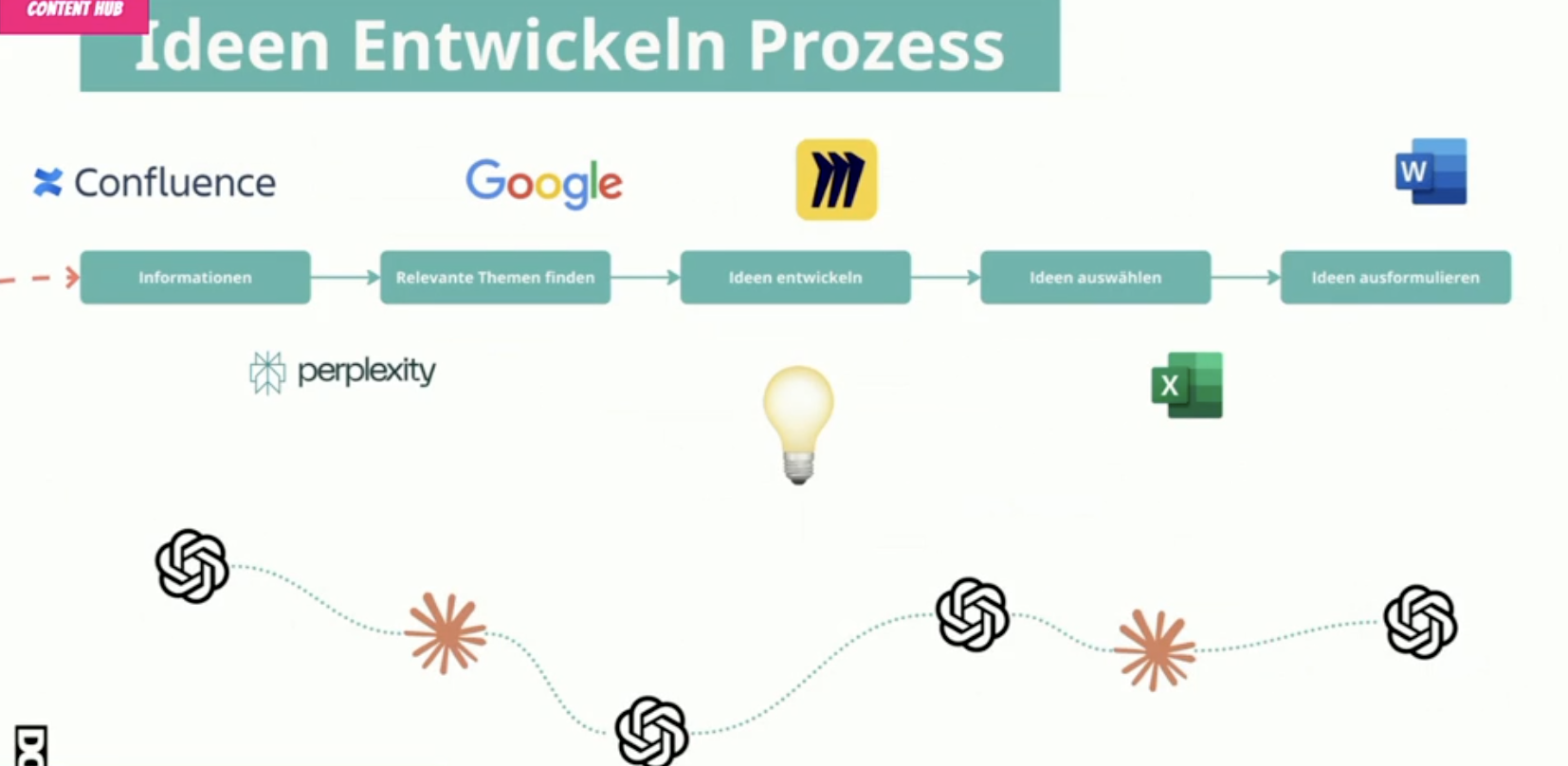
Challenges:
- Inconsistent brand language
- Tracking AI trends and responding to them
- Far too much copy-and-paste
- Too many different tools
- Varying AI expertise within the team
- Careless mistakes
- Lack of systematic approach in dealing with AI
- Agency USPs cannot be represented by standard tools
- AI expert leaves the company
- Data privacy and data security
- Efficiency issues with step-by-step processes
- Employees use AI too rarely
Problem with use-case specific tools
- tough to integrate with other tools
Option - work with adjustable AI blocks
- workflows
- agents
- assistents
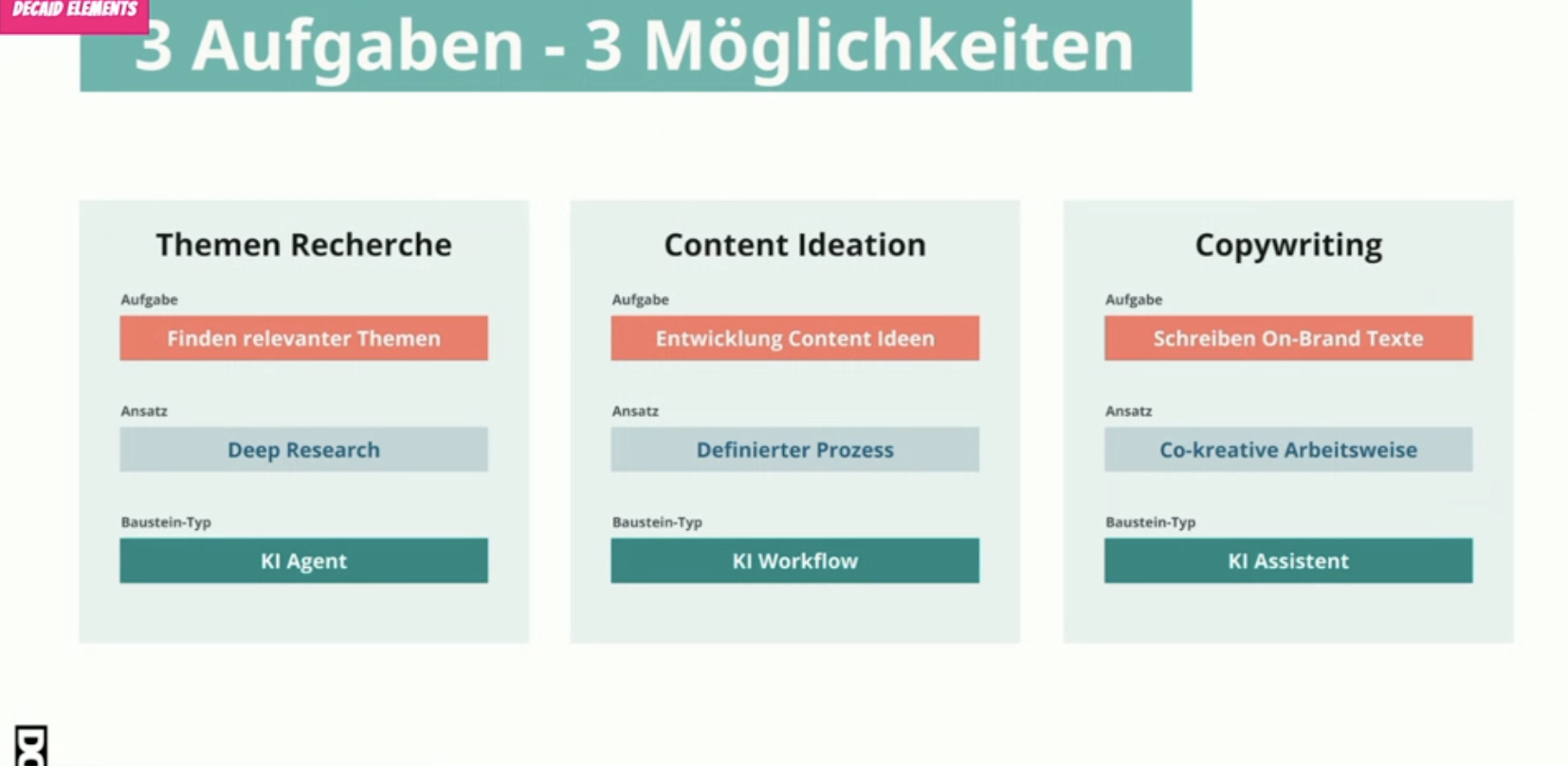
often workflows and agents are mixed/misunderstood concepts
workflows:
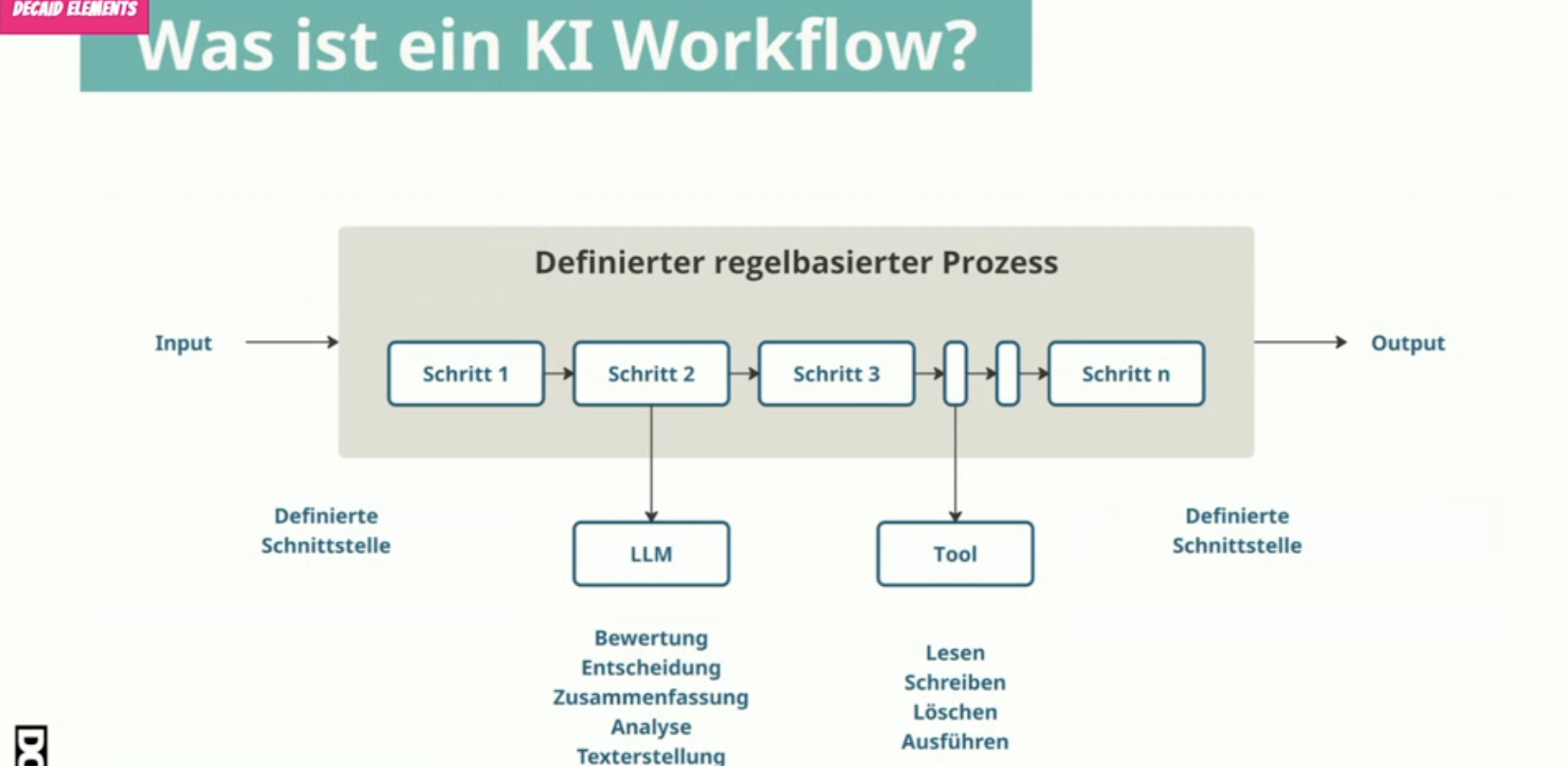
- defined starting point and output
- important for process automation
Agent:
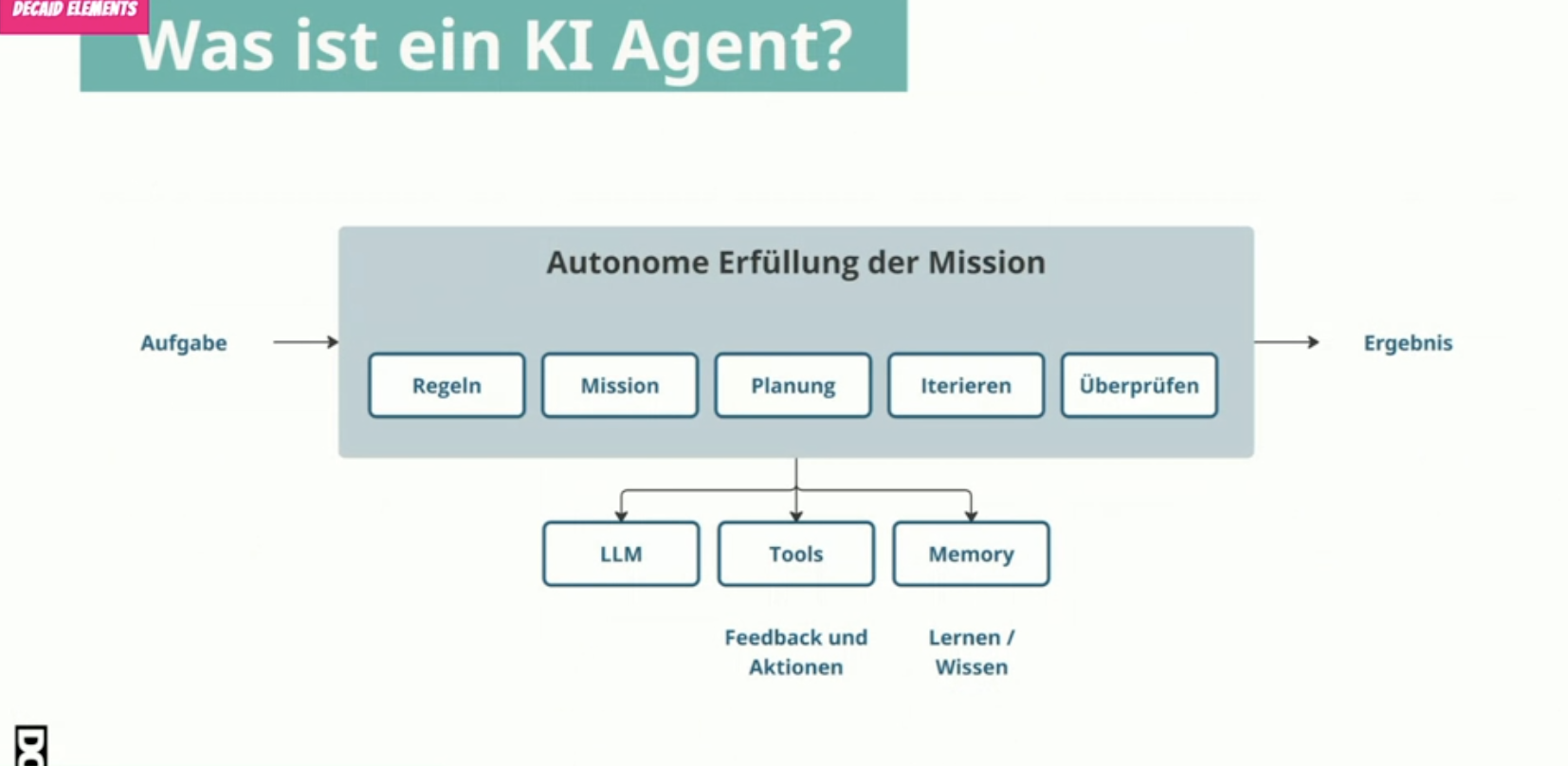
- own planing & validation
- can often learn from an execution (to further optimize their approach)
Usage examples for workflows, agents and assistants
KI Workflows
- Data Extraction
- Transcription
- Data Analytics
- Content Ideation
KI Agents
- Deep Research
- Software Development
- Helpdesk
KI Assistants
- Content Strategy
- Content Plan
- Copywriting
- Advisory
Zapier/Make
Tool example with Make.com

(like Zapier, n8n.io)
Cool use case for a No-Code content tool …
AI compliance
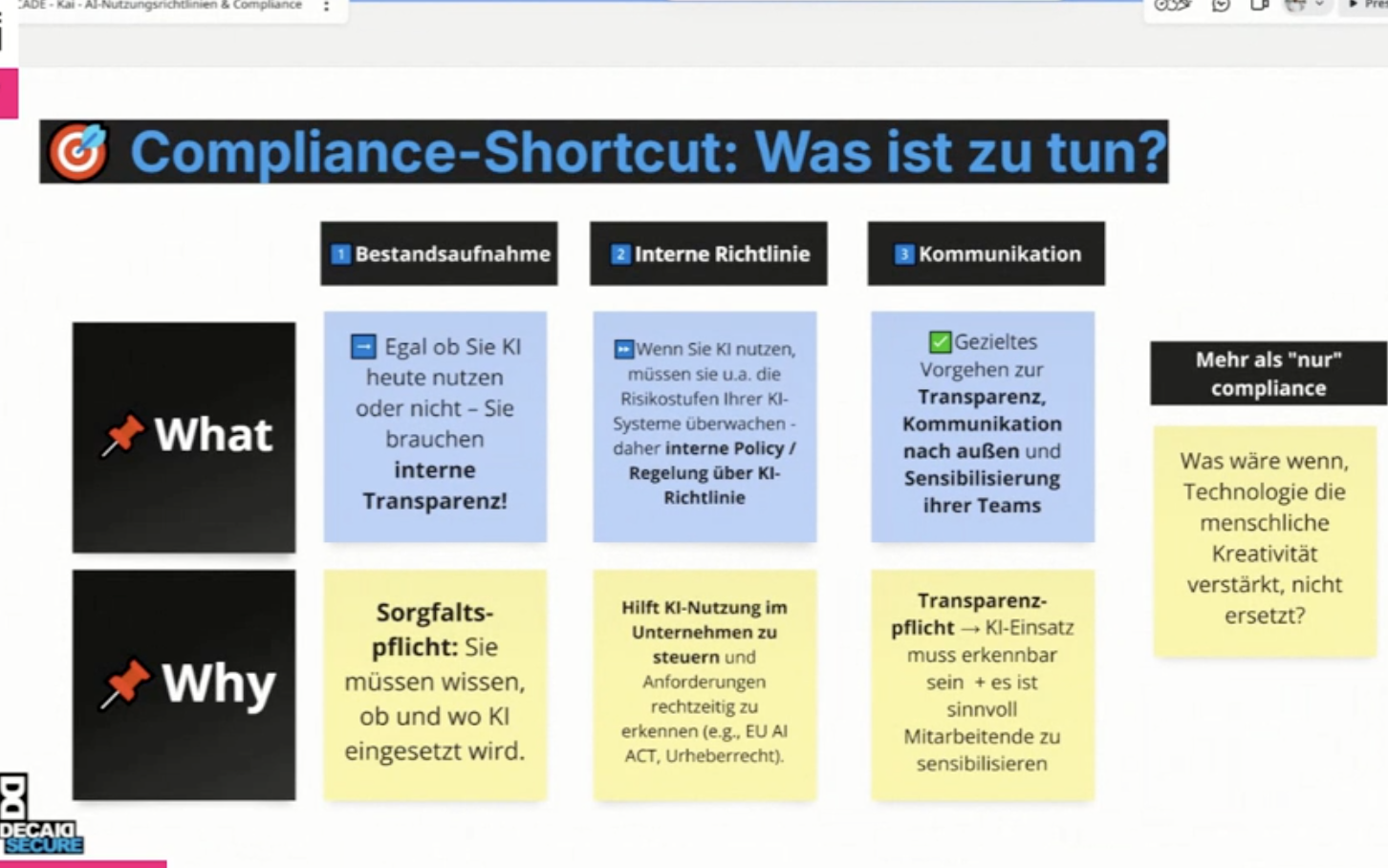
Compliance-Shortcut Analysis
1. Bestandsaufnahme (Stock-taking)
What:
- Regardless of whether you currently use AI or not, you need internal transparency.
Why:
- Duty of care: You must know whether and where AI is being utilized.
2. Interne Richtlinie (Internal Guidelines)
What:
- If you use AI, you must monitor the risk levels of your AI systems—thus, you need an internal AI policy/regulation.
Why:
- Helps manage AI usage within the company and enables timely recognition of regulatory requirements (e.g., EU AI Act, copyright).
3. Kommunikation (Communication)
What:
- Targeted measures for transparency, external communication, and internal team awareness.
Why:
- Transparency requirement: AI usage must be identifiable, and raising employee awareness is essential.
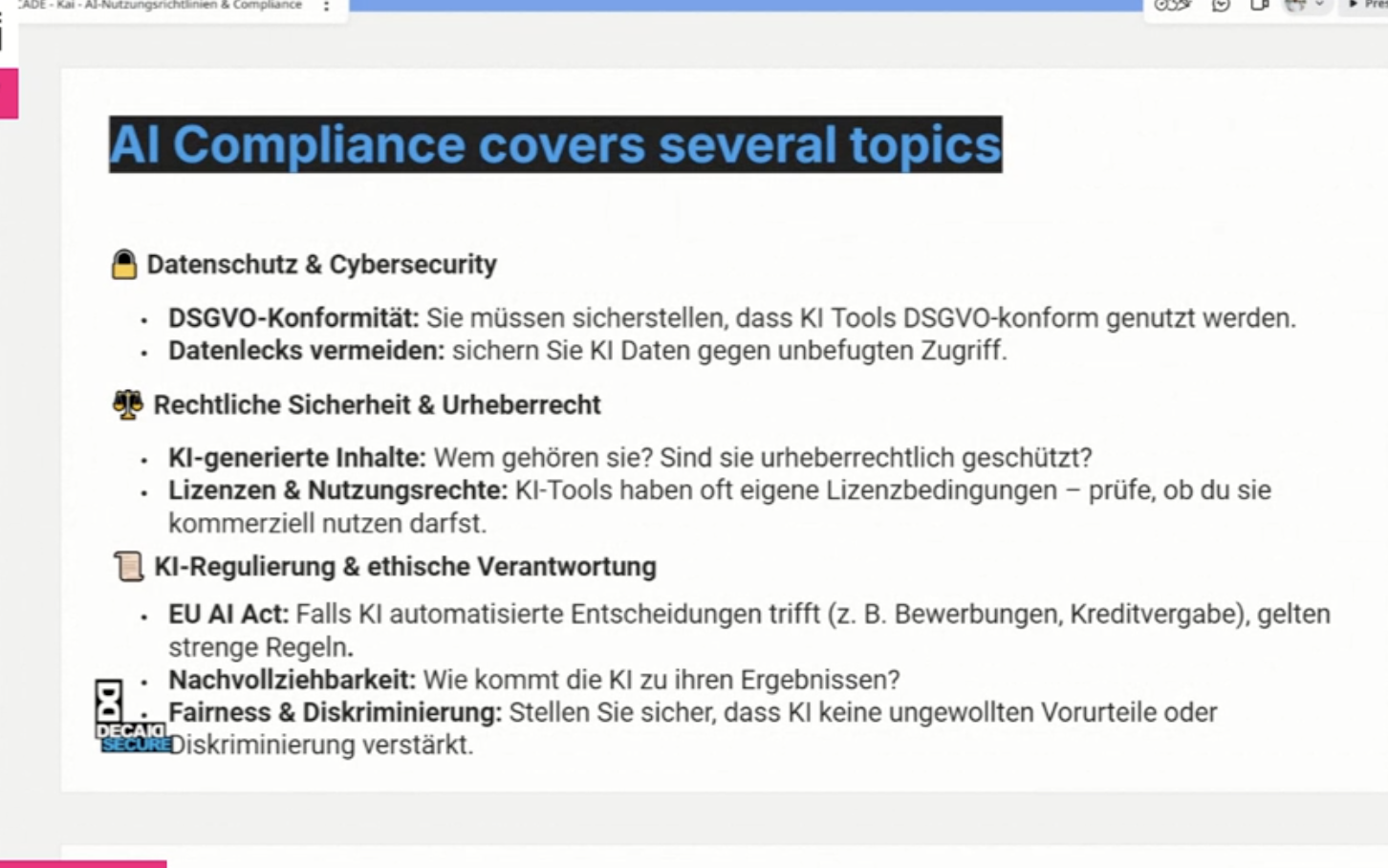
- internal high transparency on tools in use is crucial
- run a simple query in your company
- problem
- complex legal
- unclear resonsbilities/accountabilities
- missing know how
Linking
Notes mentioning this note
There are no notes linking to this note.